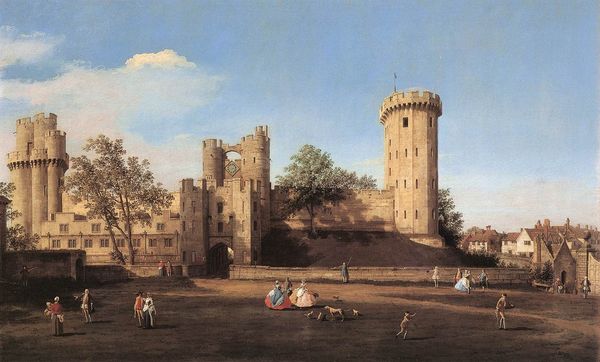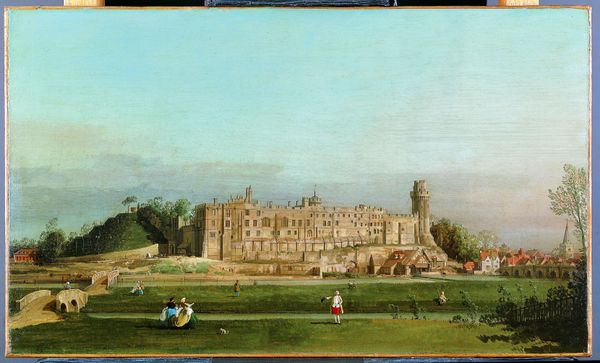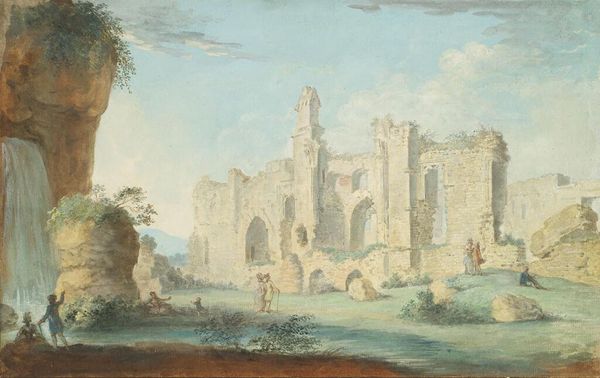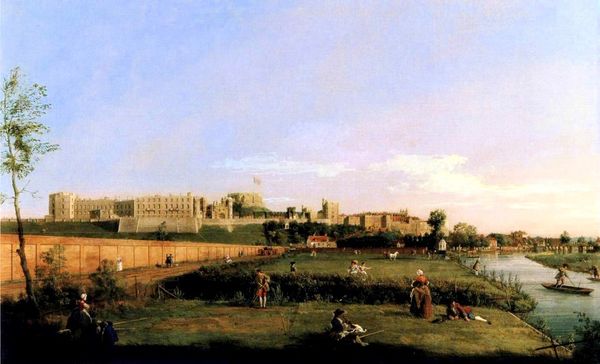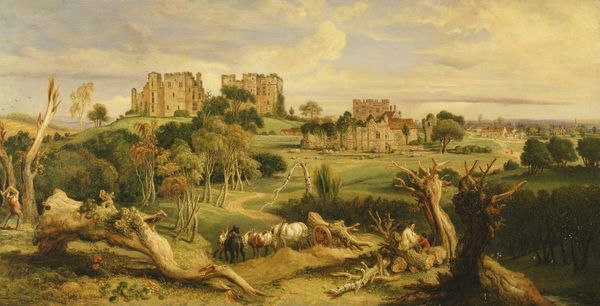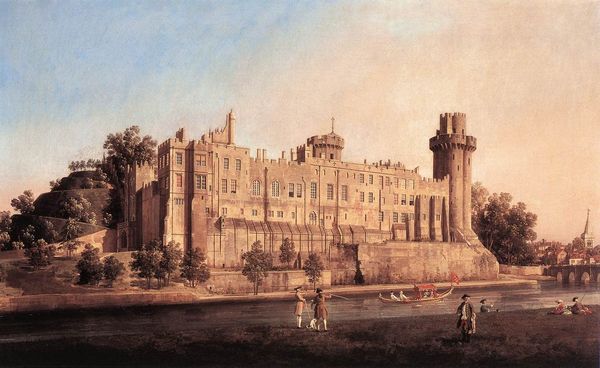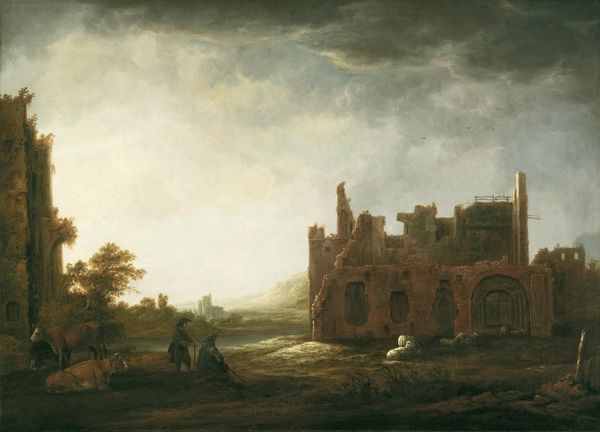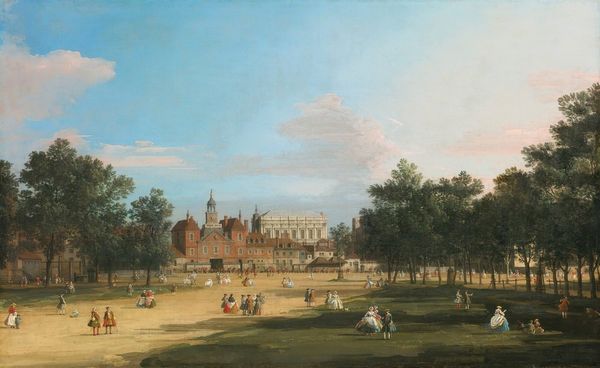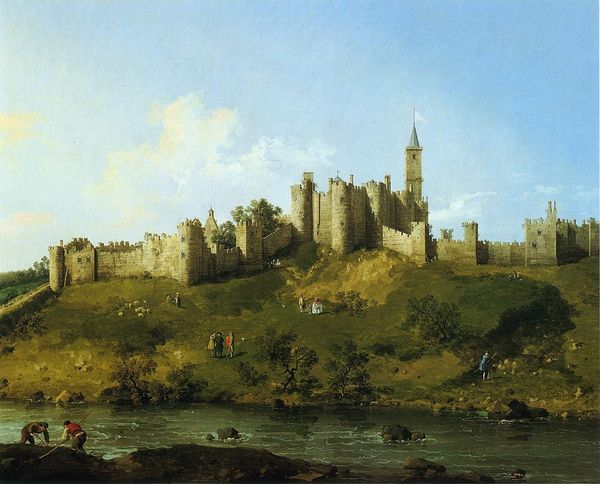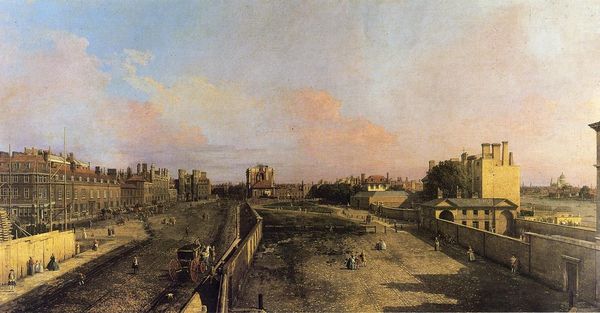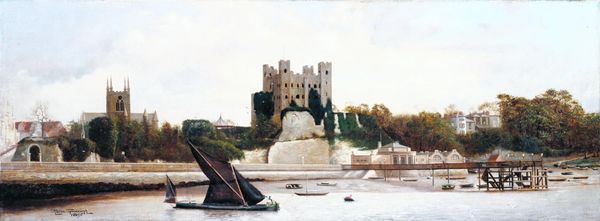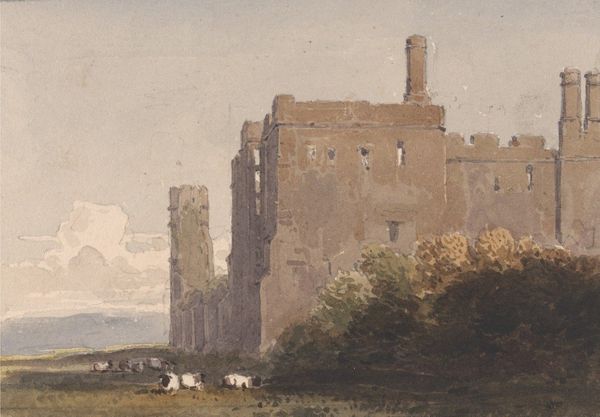
oil-paint
#
venetian-painting
#
baroque
#
oil-paint
#
landscape
#
oil painting
#
cityscape
#
history-painting
Copyright: Public Domain: Artvee
Canaletto painted Warwick Castle sometime in the mid-18th century. The castle looms large over the landscape, a powerful symbol of aristocratic authority and the feudal order. Yet, consider the motif of the castle itself. From medieval tapestries to Renaissance paintings, the castle often represents not just physical power but also psychological security. It’s a recurring dream, a fortified ego, if you will. Think of Neuschwanstein, built centuries later by Ludwig II, a refuge from the modern world, or even Kafka's nightmarish castle, an impenetrable bureaucracy. In Canaletto’s painting, the castle appears almost serene, softened by the light. It's a memory, a cultural echo, transformed and domesticated, but still resonating with that primal need for protection and dominance. The castle’s imposing presence speaks to an emotional landscape where power and vulnerability are perpetually intertwined, engaging viewers across centuries.
Comments
No comments
Be the first to comment and join the conversation on the ultimate creative platform.
